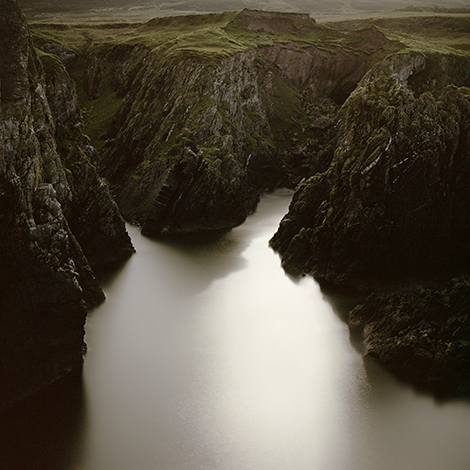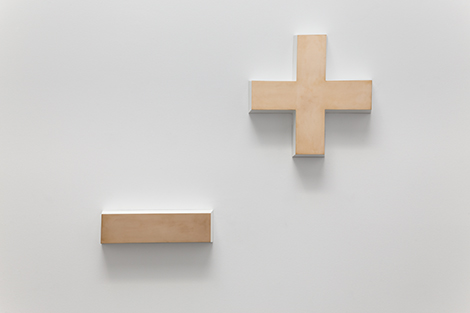Darren Almond’s two decades of paintings, sculptures, videos and photographs reflect on time as a paradox. He is not the only contemporary artist to investigate time as a subject—Andy Goldsworthy, Hiroshi Sugimoto, and John Divola come to mind—but his approach addresses the question of what constitutes the present moment and the effects time and its contemplation have upon the individual. The selection of works at Matthew Marks reveals how humans are thwarted in our attempts to capture time. Additionally, Almond’s work explores the arbitrary nature of the linguistic sign—in this case, a unit of time—as it relates to lived experience.
In several pieces, Almond points to our desire to divide time into discrete units utilizing the most common method of “telling” time—clocks. Chance Encounter 100 (2013) and Second Thoughts VII (2014) are comprised of linen panels arranged in grids, each containing a painted fragment of a number. These paintings frustrate attempts to connect the passage of time to its representation. The numbers do not line up to reveal a “real” time. That the numbers are painted—ossified in time—further confounds the desire to measure time’s passage.
Perfect Time 8×7 (2011) disorients even more. Fifty-six flip clocks with a split-flap display organized in a minimalist grid advance synchronously every minute. The top and bottom of each number on the display is mismatched, effectively rendering them as hieroglyphs. Viewers are conscious of time’s passage, but the signifiers of time are no longer translating to our experience of time elapsing.
An aluminum wall plaque in the style of a train station nameplate, At Times There Are No Words (2012), encourages the viewer to consider the linguistic possibilities of the phrase as well as the elusiveness of the present moment. The carefully calibrated train schedules do little to get us to the signified destination, which reinforces the understanding that time resists our efforts to assimilate and enclose it.
In his “Fullmoon” series, one image of which is on display here, Almond uses only the light of the full moon and a long exposure to photograph places made famous by artists and scientists over a century ago, such as Cézanne’s Mt. Saint Victoire and Darwin’s Cape Verde. Fullmoon@Islay (2014) is a stunning image of the green cliffs and serene waters of Islay, Scotland. While Almond uses a fixed amount of time to construct his image, its ethereality and dreaminess suggest time unbounded, extending from the deep past into the future far beyond our brief time on Earth.
Almond’s two-part wall sculpture of a bronze plus (+) and minus (-) sign, Either Side of Nothing (2014), considers the idea of zero. This human invention is the ultimate void and cannot even be pictured or approximated. Nothing ties the exhibition together in summation of Almond’s emphasis on the inadequacy of human-made signifiers as reliable methods of quantifying time, which in Almond’s work is ultimately set upon the viewer’s unconscious, loosed from its fetters.





